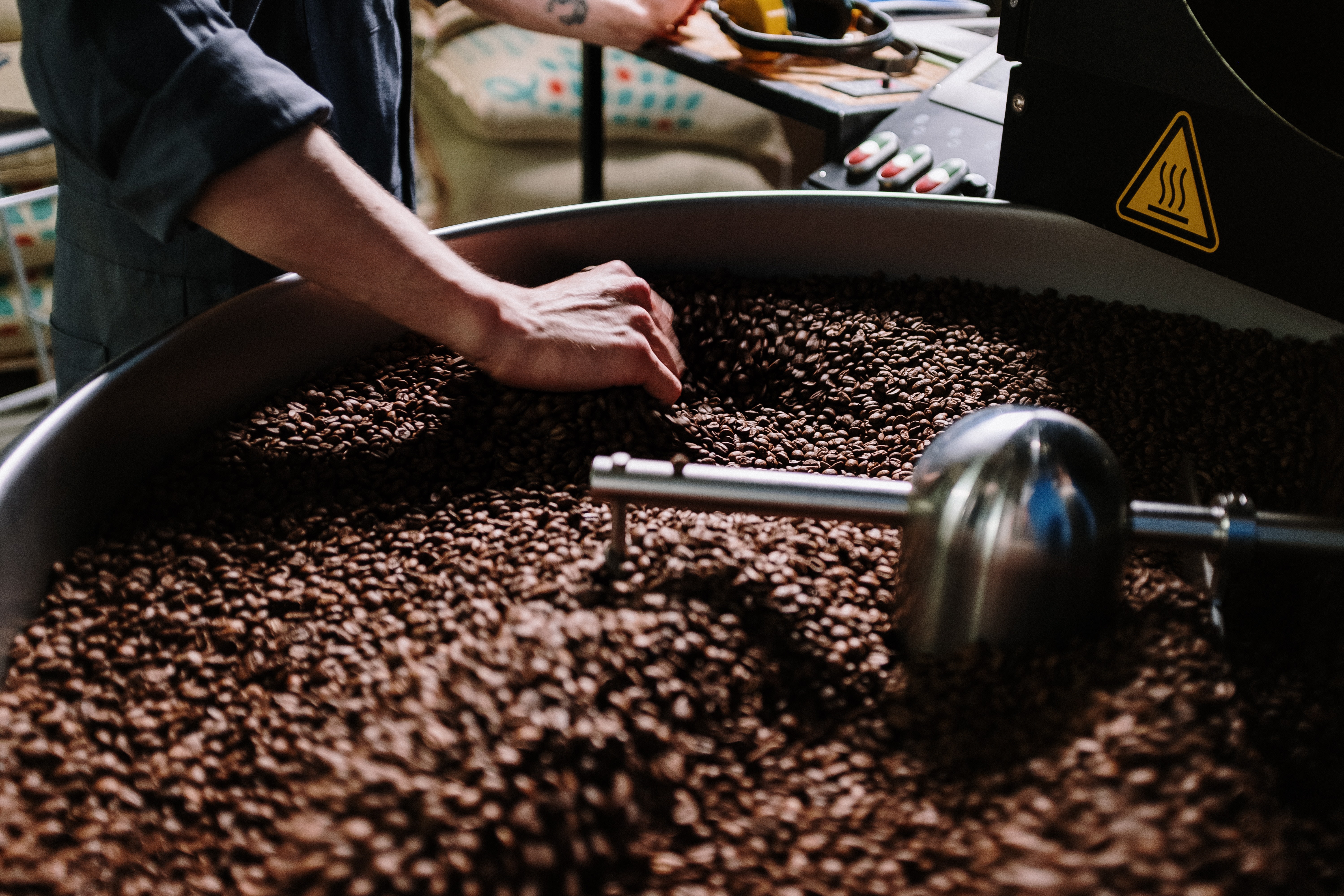
Get Roasted: Different Coffee Roasts Explained
Have you ever ordered a coffee and been asked to choose between a light, medium, or dark roast? Or seen a coffee bag with these words on it, and wondered what they meant?
Most coffees are labeled on a light-to-dark spectrum, but there is no universal definition of what these words actually mean. One shop’s light roast might be darker than a different roaster’s medium roast. Roast levels can be helpful in a general sense, but they can also be confusing when you get down to it. So what are these words trying to convey, and what sets a light coffee apart from a dark roast?
What is Coffee Roasting?
At its most basic, coffee roasting is cooking. It’s applying heat to change coffee from its raw form (called “green” coffee) to a roasted product that can be brewed, drunk, and enjoyed. Roasting changes the chemical and physical makeup of the coffee bean so we can access the delicious flavors within.
Just like baking a cake or grilling a steak, there are two main factors that determine how a coffee is roasted: heat and time. You could roast green coffee on your stovetop, in the oven, or even over an open flame - which is how coffee was roasted originally. (Fire roasting is still a primary method for roasting in some countries, Ethiopia being the prime example.) In most cases though, commercially available coffee is roasted in specialized equipment by skilled professionals to ensure it’s done right.
How Does Roasting Work?
Roasting machines come in all shapes and sizes, but the overall purpose is to apply heat to the beans so they roast evenly and consistently. Too much heat and the beans will burn; too little and the flavors won’t develop properly. Too much time and the delicate flavors will be roasted out; too little and the flavors will fall flat. The trick is to apply the right amount of heat over the right amount of time to achieve the desired flavors.
It sounds complicated, but it really isn’t that hard. Most industrial coffee roasters complete the roasting process in 8-18 minutes, with shorter times for light and some medium roasts, and longer times for other medium and dark roasts. The temperature can vary widely depending on the machine, but generally speaking, light roasts are roasted to just above 400° F, dark roasts can get up to 440°F, and medium roasts fall somewhere in the middle.
What’s the Difference in Flavor?
Because each coffee and each machine is different, there is no concrete universal definition for light versus medium versus dark. In other words, you can’t necessarily look at a coffee bean and know what roast level it is—especially between light and medium, and medium to dark. There are, however, some general characteristics that each of these roast degrees indicate.
Light roasts are visually light brown in color. They are often the most acidic coffees and can have citric notes, floral aromas, and the most delicate flavors. The purpose of roasting a coffee “light” is to showcase the intrinsic flavors of the bean without imparting any roast-y/toasty notes. Flavors from the origin country and processing method come through most clearly with light roasts, so they are often go-to’s for roasters highlighting special, high-quality coffees.
Medium roasts span a wide range of brown colors, but often have a consistent color with no oil on the surface of the bean. Medium roasted coffees can be characterized by balance - in flavors, aroma, and acidity. They retain some of the brightness and nuance of a light roast while featuring more sweetness and mouthfeel resulting from longer roasting times and higher temperatures.
Dark roasts are, as the name would indicate, dark brown and sometimes almost black. Some (but not all) have oil on the surface of the bean, which comes from the beans themselves and is a result of longer roasting and hotter temperatures. Dark roasts taste roast-y, smokey, charred, bitter, “strong,” and often have a thicker mouthfeel or a grittiness to their flavor. There is often little to no acidity. Subtleties of the coffee bean are no longer present as the prominent flavors come from the roasting process.
Why Roast Light/Medium/Dark?
Coffee has been roasted dark for most of its history. This was the preferred roast level for a variety of reasons, including lower quality green coffee (dark roasting can get rid of “bad” flavors), limitations in roasting technology (lack of consistency and precision in machines), and cultural preferences and customs (people tend to prefer what they already know). But things are changing now.
Recent decades have seen innovations in coffee growing, processing, and storage, as well as improvements to coffee roasting and brewing equipment. These changes, plus a shift in global consumption trends, have opened up a whole new landscape of delicious coffee! High-quality specialty green coffee is now widely available, lending itself to lighter roasting. Roasting machines have developed so temperature changes can be tracked more specifically. And customers are asking for coffees with brightness, nuanced flavors, and tastes like they never had before.
Which Roast is Best?
Does this mean we should abandon medium and dark roasts altogether? No! Not all coffees shine when lightly roasted. Also, many people prefer the bitter and “strong” flavors of a dark roast or the more balanced experience of a medium coffee. And that’s just fine!
Ultimately, the best roast is the one you most enjoy. Whether you're perfecting your own order or learning the ropes to run your own coffee shop, the important thing is to experiment, try different roasts, and find what you (and your customers) like best. From the subtle notes of a light roast to the bold and bitter punch of a dark roast, there is a coffee for every palate. Enjoy!
